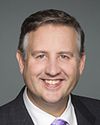We were founded more than 45 years ago, in 1955 or 1960.
Evidence of meeting #11 for Natural Resources in the 41st Parliament, 1st Session. (The original version is on Parliament’s site, as are the minutes.) The winning word was uranium.
A recording is available from Parliament.


